8 Symptoms Of Diabetes In Children To Watch Out For!
By Dr. Akash N. Shah +2 more

Get,

to manage your symptom
Get your,


4 Cr+ families
benefitted

OTP sent to 9988776655



You’ve successfully subscribed to receive
doctor-approved tips on
Whatsapp

Get ready to feel your best.

Hi There,
Download the PharmEasy App now!!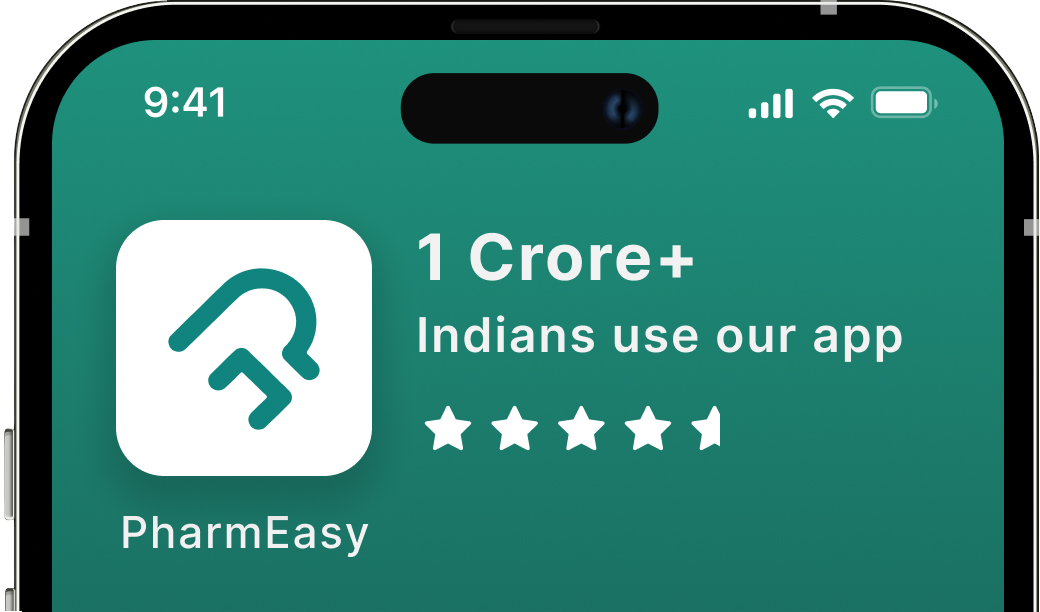


Register to Avail the Offer
Send OTPBy continuing, you agree with our Privacy Policy and Terms and Conditions

Hi There,
Sign up on PharmEasy now!!
Trusted by 4 crore+ families

OTP sent to 9988776655



You have unlocked 25% off on medicines




Code: NU25
By Dr. Akash N. Shah +2 more
Table of Contents
Type 1 diabetes (previously known as Juvenile diabetes), like other diseases, has been on the rise.
It is a type of autoimmune disease. The pancreas does not produce enough insulin to convert blood sugar into energy. This type of Diabetes in children cannot be cured and is a lifelong predicament.
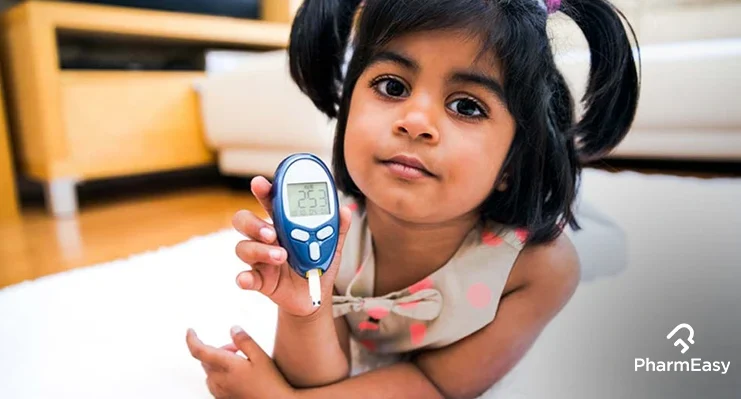
Providing healthy food options and inculcating good lifestyle habits like regular exercise and proper sleep are essential for better health and well-being. Encourage your children to eat a diet low in fat, sugar, processed foods and to eat nutrient-rich food like fruits and vegetables, lean meats, and protein-rich foods. Drinking an ample amount of water is also beneficial for better health, growth, and prevention of various diseases. There are certain warning signs that trigger the possibility of diabetes in children1. They are listed below.
If a child has diabetes and it isn’t diagnosed for a long time or they also become unwell with an infection, they may be at risk of diabetic coma which may make them lose consciousness because of brain swelling.
Dr. Ashish Bajaj, M.B.B.S. M.D. in Clinical Pharmacology and Toxicology

The child experiences several bouts of extensive thirst as the blood sugar pulls out water from the cells. This also leads to frequent urination. Some children even start bedwetting2.
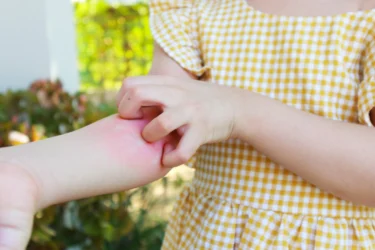
Patients start suffering from itchy skin and dry mouths. This is because of a lack of fluids in the body that manifests as these symptoms2.

Children suffering from diabetes experience extreme hunger, even after eating full meals. This is because the body is unable to utilize the energy released from the food consumed2.
The most common signs of diabetes in toddlers and children include an increase in thirst and more frequent or increased urination. Most of the time in my practice, I have seen that most children’s parents notice ants around the child’s urine in the bathroom.
Dr. M.G. Kartheeka, MBBS MD(Pediatrics)
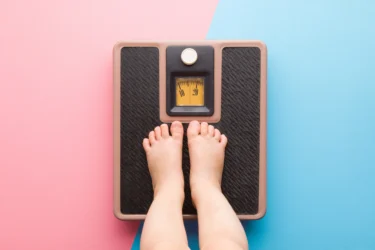
Even though the child eats his meals, he/she may suffer from weight loss. This is again because the body is unable to put to use the energy released from food2.

Lethargic behavior, feelings of laziness and drowsiness are all warning signs of diabetes in children. The body is left without its requisite energy fuel as it cannot utilize the blood sugar to provide energy2.
Want to manage your diabetes effectively? Book your free diabetes consultation from our experts!

Children suffering from diabetes exhibit behavioural changes. They may become irritable, anxious and aggressive. Some of them feel the blues and might even suffer from depression3.

Symptoms related to eyes might be the very initial symptoms experienced by some children.. The common complains include blurred vision, dryness of eyes and itching , often accompanied with urinary complains and dryness of mouth.
Also Read: 8 Sign & Symptoms Of Diabetes In Men
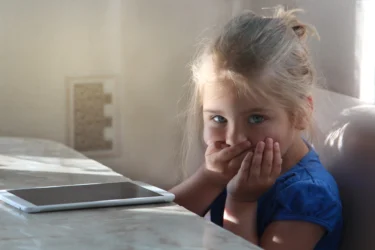
One of the most obvious signs of diabetes in children is the development of sweet-smelling, fruity breath. This is because of the build-up of toxic acids in the bloodstream and the urine. These toxic acids, known as ketones, cause a fruity smell. The children who develop significant amounts of ketones, eventually experience pain in abdomen, nausea, vomiting and difficulty in breathing. This is a red flag, requiring urgent medical intervention, often requiring hospitalization for better care of the child4.
If left untreated, diabetes can shut down the system, organ by organ. In long term, It can cause cataract, glaucoma and sometimes complete vision loss The cuts and bruises take a long time to heal in diabetics and are at risk of developing gangrene. The feet are at a risk, especially since they receive the least blood flow in the body.
If diabetes runs in your family or if you notice any of the above symptoms in your child, get a blood sugar test done immediately for comprehensive and timely action.
Type 1 diabetes can occur at any age, but most children are diagnosed within two age ranges – when they are between 4-7 years old and 10-14 years old.
Dr. Ashish Bajaj, M.B.B.S. M.D. in Clinical Pharmacology and Toxicology
Also Read: Diabetes: The Silent Killer Sweeping Across India
1. Ref : Liu, J., Ren, ZH., Qiang, H. et al. Trends in the incidence of diabetes mellitus: results from the Global Burden of Disease Study 2017 and implications for diabetes mellitus prevention. BMC Public Health 20, 1415 (2020).Available from: https://bmcpublichealth.biomedcentral.com/articles/10.1186/s12889-020-09502-x
2. CDC. Symptoms of Diabetes [Internet]. Atlanta (GA): Centers for Disease Control and Prevention; 2024 May 15 [cited 2025 Oct 16]. Available from: https://www.cdc.gov/diabetes/signs-symptoms/index.html
3. de Wit M, Gajewska KA, Goethals ER, McDarby V, Zhao X, Hapunda G, Delamater AM, DiMeglio LA. ISPAD Clinical Practice Consensus Guidelines 2022: Psychological care of children, adolescents and young adults with diabetes. Pediatr Diabetes. 2022 Dec;23(8):1373-1389. doi: 10.1111/pedi.13428. Epub 2022 Dec 5. PMID: 36464988; PMCID: PMC10107478. Available from: https://pmc.ncbi.nlm.nih.gov/articles/PMC10107478/
4. Sha MS, Maurya MR, Shafath S, Cabibihan JJ, Al-Ali A, Malik RA, Sadasivuni KK. Breath Analysis for the In Vivo Detection of Diabetic Ketoacidosis. ACS Omega. 2022 Jan 24;7(5):4257-4266. doi: 10.1021/acsomega.1c05948. PMID: 35155918; PMCID: PMC8830064. Available from: https://pmc.ncbi.nlm.nih.gov/articles/PMC8830064/
Disclaimer: The information provided here is for educational/awareness purposes only and is not intended to be a substitute for medical treatment by a healthcare professional and should not be relied upon to diagnose or treat any medical condition. The reader should consult a registered medical practitioner to determine the appropriateness of the information and before consuming any medication. PharmEasy does not provide any guarantee or warranty (express or implied) regarding the accuracy, adequacy, completeness, legality, reliability or usefulness of the information; and disclaims any liability arising thereof.
Links and product recommendations in the information provided here are advertisements of third-party products available on the website. PharmEasy does not make any representation on the accuracy or suitability of such products/services. Advertisements do not influence the editorial decisions or content. The information in this blog is subject to change without notice. The authors and administrators reserve the right to modify, add, or remove content without notification. It is your responsibility to review this disclaimer regularly for any changes.
Comments

Leave your comment...
You may also like
Comments